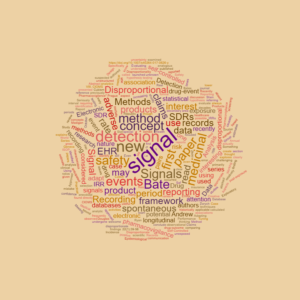 Signals of Disproportional Recording – Seriously?
Signals of Disproportional Recording – Seriously?
I have read with great interest a paper recently published in Drug Safety journal (Zhou X, Douglas IJ, Shen R, Bate A. Signal Detection for Recently Approved Products: Adapting and Evaluating Self-Controlled Case Series Method Using a US Claims and UK Electronic Medical Records Database. Drug Saf. https://doi.org/10.1007/s40264-017-0626-y). As always, I read with attention all papers authored by Andrew Bate and his team.
Something in the paper that called my attention was the concept of “Signals of Disproportional Recording (SDRs)“. I read it first in the abstract, and my first thought was that it was an error, and the authors were actually referring to Signals of Disproportionate Reporting (SDRs). Signals of disproportionate reporting are understood as statistical associations between medicinal products and adverse events i.e. drug-event pairs. When a SDR is identified for a medicinal product, this adverse event is reported relatively more frequently in association with this medicinal product than with other medicinal products (Practical Aspects of Signal Detection in Pharmacovigilance : Report of CIOMS Working Group VIII. CIOMS, Geneva, 2010).
Of course, it was not a mistake. The Analysis Methods section of the paper explains it clearly:
Incidence rate ratios (IRRs) are calculated by comparing the rate of events in a given post-exposure period (risk period) with the rate of events in unexposed periods absent of the exposure (all other observed times). In a signal screening framework, statistical uncertainty is examined based on the 95% confidence interval (CI) of the IRR estimates. Specifically, when the lower bound of the 95% CI of the IRR estimate is > 1, this is considered a positive finding and is a Signal of Disproportional Recording (SDR) analogous to SDRs in spontaneous reporting, which are findings of potential interest that have not undergone clinical review to be considered signals of suspected causality.
But I wanted to know more about this new concept. Who was the first one to use it on a scientific communication? I did a little research and found one reference for the same concept: A. Bate. Tuning Epidemiological Study Design Methods for Exploratory Data Analysis in Real World Data. Abstract presented in 15th ISOP Annual Meeting “Cubism in Pharmacovigilance” Prague, Czech Republic 27-30 October, 2015.
So, it is clear that the concept of signal of disproportional recording has been first used by Andrew Bate. The concept is brilliant. The finding of an adverse event-drug pair in an electronic health record happens because someone recorded it, independently of whether or not is was also reported.
Even though secondary use of electronic healthcare records (EHR) and insurance claims data for hypothesis testing has occurred for many decades, signal detection activities to identify potential drug safety issues has historically focused primarily on spontaneous reports. But there is an increasing interest on using EHR for signal detection in pharmacovigilance. Electronic health records exhibit special characteristics (longitudinal nature, partially unstructured data) that is requiring to adapt old analytics to this new framework, and even create new methods and concepts (Zorych I, Madigan D, Ryan P, Bates A. Disproportionality methods for pharmacovigilance in longitudinal observational databases. Stat Methods Med Res 2013; 22(1):39-56). That is, the analytic techniques used for the analysis of drug-event (or drug-outcome) pairs in spontaneous reporting of adverse events, are not directly applicable to EHR and claims data. Creative thinking and new research are welcome in this area.
The paper is interesting, not only for using “disproportional recording”, which is anecdotal. It explores how to adapt and evaluate the self-controlled case series method and its use in claims and electronic medical records databases, for the challenging aspect of signal detection in the framework of recently approved products. You will find an interesting discussion on the appropriate risk period selection method, which may be different in drug safety signal detection, than in formal hypothesis-testing studies.
The authors conclude that self-controlled case series method may be useful for safety signal detection in EHRs, and that early identification of previously unknown safety signals may be possible shortly after a new product is launched. Performance of this method varies by the nature of both exposure and event pair and their anticipated association.
Leave a Reply